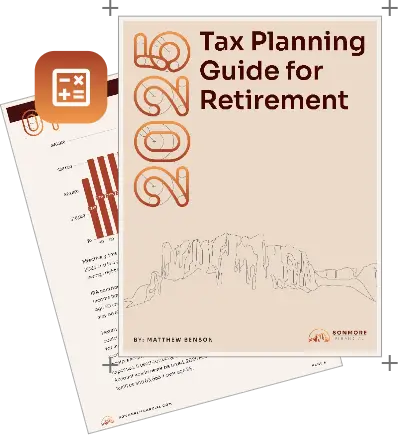Table of contents
When approached in the right way, tax season is about more than just filing your returns with the IRS. Tax prep time is a great opportunity for retirees to perform an annual financial wellness check, review income sources and make deliberate decisions about their financial future.
For most Americans, Social Security benefits are a crucial part of the retirement strategy, but the timing of when to claim these benefits can significantly impact their overall financial security.
Whether you’re already retired or a few years away, understanding the nuances of Social Security benefits can help you maximize your income and minimize taxes.
Social Security benefit basics
Social Security benefits are designed to provide a steady income to retirees, disabled people, and survivors of workers who have passed away. However, the amount you receive depends on:
- Your earnings history: Benefits are calculated based on your highest 35 years of earnings. The Social Security Administration provides a Quick Calculator, along with other, more detailed calculators, to help get oriented about the benefits you can expect.
- When you claim benefits: You can start claiming as early as age 62, but waiting until your full retirement age (FRA) or even age 70 increases your monthly benefit. The current FRA is age 67.
- Be aware that the age for Medicare eligibility remains 65. Be sure to stay up to date on requirements as your 65th birthday approaches, so you don’t incur late enrollment penalties.
- Your marital status: Spousal and survivor benefits can also impact your claiming strategy.
Tax season is a perfect time to reevaluate
During tax season, retirees are already gathering financial documents, including 1099s and other income statements. This is a natural opportunity to review:
- Your total income sources (e.g., pensions, investments, and part-time work)
- Potential tax implications of Social Security benefits
- Future needs for supplemental income
By reevaluating your Social Security strategy during this period, you can align your benefits with your financial goals and tax obligations.
When should you claim Social Security benefits?
The right time to claim Social Security depends on your financial situation, health, and retirement goals. Let’s break it down:
Claiming Early (Age 62–Full Retirement Age)
Pros:
- Immediate access to benefits.
- Beneficial for those with shorter life expectancies or immediate income needs.
Cons:
- Reduced monthly benefits (up to 30% less than at FRA).
- Potential tax penalties if you continue to work while claiming early benefits.
Claiming at Full Retirement Age (66–67, Depending on Year of Birth)
Pros:
- Full benefits with no reductions.
- No penalty for earning income while working.
Cons:
- You forgo higher monthly payments you’d receive by waiting longer.
Delaying Benefits (Up to Age 70)
Pros:
- Monthly benefits increase by 8% every year you delay past FRA.
- Ideal for those with longer life expectancies or strong financial health.
Cons:
- Requires delaying income, which may not be feasible for everyone.
Tax implications of Social Security benefits
A common question among retirees is, “Are Social Security benefits taxable?” The answer depends on your total income:
- If your combined income (adjusted gross income + nontaxable interest + 50% of Social Security benefits) is:
- Less than $25,000 (single) or $32,000 (married filing jointly): Benefits are not taxed.
- Between $25,000–$34,000 (single) or $32,000–$44,000 (married): Up to 50% of benefits may be taxable.
- Over $34,000 (single) or $44,000 (married): Up to 85% of benefits may be taxable.
There are a number of tactics retirees can use to minimize their tax liability while claiming Social Security benefits. They include:
- Managing withdrawals: Coordinate withdrawals from IRAs or 401(k)s to avoid crossing higher income thresholds, resulting in a bigger tax bill
- Delaying Social Security: By drawing from retirement accounts first, you can lower taxable income and defer claiming benefits.
- Consider Roth conversions: A Roth IRA is a type of retirement account that is funded with after-tax dollars. That money is later withdrawn tax-free. This contrasts with other plans, like a 401(k) that are funded tax-free but increase your tax bill at the time they’re withdrawn. Moving funds to a Roth IRA frontloads your tax liability, which can reduce taxable income during retirement.
Social Security for couples: Maximizing both your benefits
As you walked down the aisle or raised a growing family, you probably weren’t thinking a lot about your retirement strategy.
As your partnership matures, it’s a good idea to look at the options available to married couples, and get on the same page with your spouse about your plans.
Spousal Benefits
- A spouse can claim up to 50% of their partner’s FRA benefit.
- This is ideal when one spouse has significantly lower lifetime earnings—for instance, if one spouse was a stay-at-home parent or caretaker while the other worked outside the home.
Survivor Benefits
- The surviving spouse can claim higher benefits after one spouse dies.
- Survivor benefits are based on the age of the surviving spouse, and how long they wait to apply. Delaying the higher-earning spouse’s benefits until age 70 can maximize survivor income.
File and Suspend strategies (if eligible)
- Though restricted after 2016, couples born before specific dates can explore restricted applications for additional benefits.
Social Security and longevity considerations
Life expectancy plays a significant role in Social Security strategies. Retirees should consider:
- Family health history and personal wellness. The average life expectancy for all U.S. citizens is 77 years old. Your outlook may be affected by local and environmental factors, or congenital risk factors, beyond your own personal health.
- Break-even analysis: Calculate the age at which delaying benefits results in a financial advantage over early claiming.
For instance, if you delay claiming from age 62 to 70, you’ll receive higher payments, but it may take several years of receiving these higher payments to catch up with early claimers.
Let’s illustrate with some basic math. Jim and Dwight are both entitled to Social Security benefits of $100,000 per year.
Jim elects to delay his claim until age 70, thus earning 100% of his benefit, or $100,000 per year. Dwight elects to claim early at age 62, incurring a 30% penalty. He thus receives $70,000 per year.
Both die at the average age of 77. By this time, Dwight will have received Social Security benefits for 15 years, compared to Jim’s 7. In total, Dwight will have received $1,050,000 (15 years x $70k) while Jim will have received only $700,000 (7 years x $100k).
In fact, it would take 27 years at this rate for Jim’s total benefits to exceed Dwight’s — both men will be 88 years old.
Clearly, there are unique factors in play for every retirement strategy. Disciplined savers might be attracted to deferring their claim to avoid penalties and maximize benefits, but this example shows there may be good reasons to consider other options.
A professional can help you
Social Security claiming decisions are extremely personal. Consulting with a financial planner or tax professional can:
- Help you navigate complex rules and scenarios
- Identify tax-efficient withdrawal strategies
- Ensure your Social Security benefits align with your broader financial goals
- Give your spouse or family peace of mind about their financial security, in case they outlive you
More resources for understanding Social Security
To further understand your Social Security benefits and strategize effectively, consider exploring the following resources:
- Social Security Administration (SSA) Website: www.ssa.gov
- SSA Retirement Benefits Calculator: A tool to estimate benefits based on earnings and claiming age.
- IRS Publication 915: Guidance on the taxation of Social Security benefits.
- My Social Security Account: Create an account to review your earnings history and estimated benefits.
Disclosure
Advisory services are offered through Sonmore Financial LLC, an Investment Advisor in the State of Arizona. This material represents an assessment of the market environment at a specific point in time and is not intended to be a forecast of future events, or a guarantee of future results. This information should not be relied upon by the reader as research or investment advice regarding any funds or stocks in particular, nor should it be construed as a recommendation to purchase or sell a security. Past performance is no guarantee of future results. Investments will fluctuate and when redeemed may be worth more or less than when originally invested.



